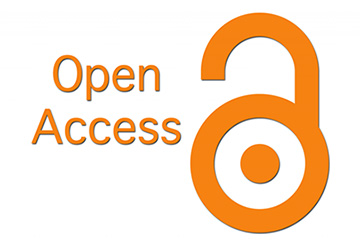![]()
In late 2018, the announcement of Plan S jolted the global scientific publishing community. A group of European funders, calling itself cOAlition S, released its provocative statement of intent to terminate all subscription journals and flip the entire scholarly publishing ecosystem to open access (OA).
While publishers and researchers in general agreed with the benefits asserted for open-access publishing, they raised concerns about the specifics of the coalition’s proposal. The Optical Society (OSA) joined the voices offering feedback with a response to the coalition’s request for input.
Two years on, cOAlition S is again attempting to move the needle on a flip to OA with its new “Rights Retention Strategy (RRS).” Faced with little global uptake of the Plan S approach and some prominent departures from the coalition, the new tactic seeks to speed up a transition away from the traditional subscription-based journal publication model. Here are some things that we believe authors should understand about RRS.
Plan S principles and reality
Plan S rests on ten principles. One of those outlines the coalition’s goal for researchers to publish their work in so-called gold OA journals (in which authors pay a fee to publish), along with a commitment by the funders to cover the associated fees. The principles also focus on the need for authors to publish their work under a Creative Commons Attribution (CC BY) license, so that their article is available for unlimited reuse—even commercially—without restriction; and to make articles openly available immediately upon publication. OSA currently publishes five journals that meet these criteria: Optica, Optics Express, Biomedical Optics Express, Optical Materials Express, and OSA Continuum.

Effective 1 January 2021, cOAlition S members will require funded authors to publish their work in “compliant Open Access journals or platforms.” While gold OA is preferred, funded authors are still permitted to publish in “green OA” journals, which allow authors to repost papers in open-access institutional repositories; or hybrid journals, which include both subscription and OA content—provided that those journals also offer a CC BY license and impose no embargo period between publication and free access. Most hybrid journals, however, use embargos and more restrictive licenses to recoup the costs associated with producing, hosting, archiving and disseminating the content they publish.
Threats to author freedom—and more
Because of this, there are significant concerns that Plan S restricts authors’ freedom to publish in the journals that best serve their work. It’s true that cOAlition S funders have committed, as part of Plan S, to making funding decisions based on the intrinsic merit of a researcher’s work rather than where it is published. For most scientists across the globe, however, it is still important to be able to publish in the most prestigious and well-known journals in the field, regardless of the journal’s business model. This will no longer be possible for researchers funded by cOAlitions S members.
The new Plan S RRS is designed to address this by enabling authors who either cannot or do not want to publish in a gold OA journal to retain the rights to their accepted manuscript and make it available via an institutional or other repository immediately and under a CC BY license—even if it is later published in a green or hybrid journal that does not allow such rights retention. There are, however, problems with this approach too.
One issue is that by taking away the author’s ability to make their work available under any license other than CC BY, the author loses the right to control any future reuse of their work, despite retaining copyright. The RRS has hence been dubbed by some a “rights confiscation strategy.”
Scholarly societies at risk
Making accepted versions of papers available immediately upon publication also risks undermining the business model of green OA journals. While the publisher would still own the final published version of record, many readers will make do with the accepted version posted at an institutional repository. This would lead to subscription cancellations.
A reduction in subscription income, in turn, limits the ability of publishers like OSA to innovate, invest in new technologies and develop new solutions to improve content accessibility and discoverability for the benefit of the research community. It would also, we believe, put the peer-review process and quality standards in jeopardy. Society publishers that rely on journal subscription income to fund outreach and other activities would also have to cut back on, or even eliminate, the wide array of valuable services they provide to their communities.
Global harm for limited gain
Members of cOAlition S fund around 3.3% of the global scientific paper output, according to a study from the consulting firm Delta Think. One of the coalition’s stated goals has been to recruit additional funders around the world to their cause. But its real worldwide influence remains limited.
While more than a dozen national funders and other research organizations have joined or expressed support since launch, several prominent funders have declined to join. Indeed, two founding members have withdrawn—including, most recently the European Research Council (ERC). The ERC Scientific Council still supports the Plan S principles but stated that restrictions on publication in hybrid journals would be “detrimental, especially for early career researchers, researchers working in countries with fewer alternative funding opportunities or working in fields in which Open Access policies are more difficult to implement.”

Like many society publishers, OSA serves a global community of researchers, and our journals provide outlets for optics and photonics research for all members of our community regardless of their funder or ability to pay. Authors (or their funders) can pay to publish in our gold OA or hybrid journals, and can publish for free in our hybrid journals. OSA also offers fee waivers to authors from low-income countries, and we provide access to our subscription journals to researchers in those parts of the world for free too. While OA is growing, it has not been equally adopted in all parts of the world and not everyone can afford to pay gold OA publication fees. It’s therefore important for OSA to continue to offer a range of options to meet the needs of all authors in our community.
Embracing sustainable open science
In general, publishers have embraced open science and are working collaboratively to make OA a reality where it’s desired and appropriate. Not everyone agrees on how to make this transition happen, and there is certainly no international consensus around implementation. What is true, however, is that a successful route to OA will be one that’s supported and driven by researchers and their needs.
OSA firmly believes that researchers should be able to publish in the most appropriate outlet for their work and should be empowered to use their rights to their work as they see fit to best advance their scholarship. We will continue to enable researchers to make their work as widely available as possible with quality and integrity and to support a more open environment to ensure that research is read, validated, critiqued, and built upon.
Alison Taylor is the Executive Editor of OSA Publishing.
